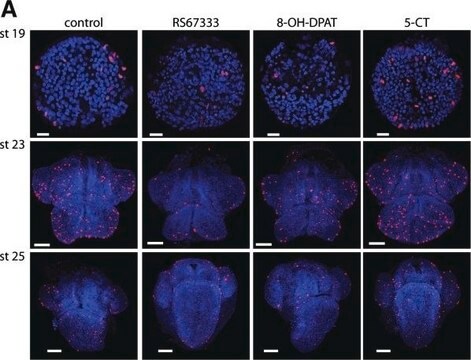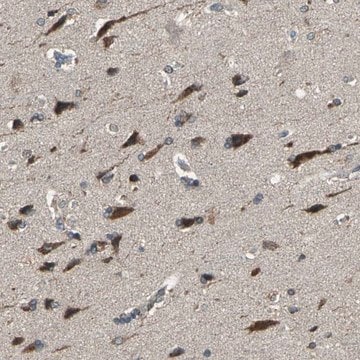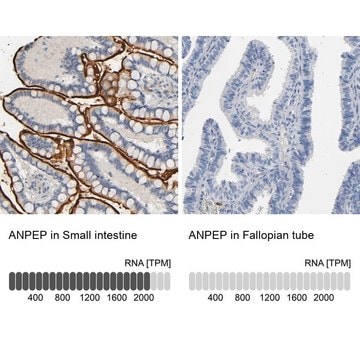MABE941
Anti-phospho Histone H3.1 (Ser28), clone 5D10D4 Antibody
clone 5D10D4, from rat
Sinónimos:
Histone H3.1, Histone H3/a, Histone H3/b, Histone H3/c, Histone H3/d, Histone H3/f, Histone H3/h, Histone H3/I, Histone H3/j, Histone H3/k, Histone H3/l
About This Item
Productos recomendados
biological source
rat
Quality Level
antibody form
purified immunoglobulin
antibody product type
primary antibodies
clone
5D10D4, monoclonal
species reactivity
human
technique(s)
ChIP: suitable (ChIP-seq)
ELISA: suitable
dot blot: suitable
immunocytochemistry: suitable
western blot: suitable
isotype
IgG2aκ
NCBI accession no.
UniProt accession no.
shipped in
wet ice
target post-translational modification
phosphorylation (pSer28)
Gene Information
human ... HIST1H3F(8968)
General description
Immunogen
Application
ChIP-seq: representative lot of this antibody was reported to be suitable for ChIP-seq. Personal communication Dr. T. Tachibana, Cell Engineering Corp. Osaka City, Japan.
Dot Blot Specificity Analysis: A representative lot of this antibody at a concentration of 0.5ug/mL was evaluated for cross reactivity with a panel of modified and unmodified peptides.
Immunocytochemistry: A representative lot of this antibody was reported to detect Histone H3.1 phosphorylated at serine 28 in Mitotic DM4 cells. See Yoshimi et al. (2013)
ELISA: A representative lot of this antibody was used in ELISA against a panel of phophorylated and unmodified peptides to demonstrate specificity. See Yoshimi et al. (2013).
Epigenetics & Nuclear Function
Histones
Quality
Western Blotting Analysis: A 1 µg/mL dilution of this antibody detected phospho Histone H3.1 (Ser28) in a nocodozole treated HeLa cell lysate.
Target description
Linkage
Physical form
Storage and Stability
Other Notes
Disclaimer
Not finding the right product?
Try our Herramienta de selección de productos.
Storage Class
12 - Non Combustible Liquids
wgk_germany
WGK 1
flash_point_f
Not applicable
flash_point_c
Not applicable
Certificados de análisis (COA)
Busque Certificados de análisis (COA) introduciendo el número de lote del producto. Los números de lote se encuentran en la etiqueta del producto después de las palabras «Lot» o «Batch»
¿Ya tiene este producto?
Encuentre la documentación para los productos que ha comprado recientemente en la Biblioteca de documentos.
Nuestro equipo de científicos tiene experiencia en todas las áreas de investigación: Ciencias de la vida, Ciencia de los materiales, Síntesis química, Cromatografía, Analítica y muchas otras.
Póngase en contacto con el Servicio técnico





